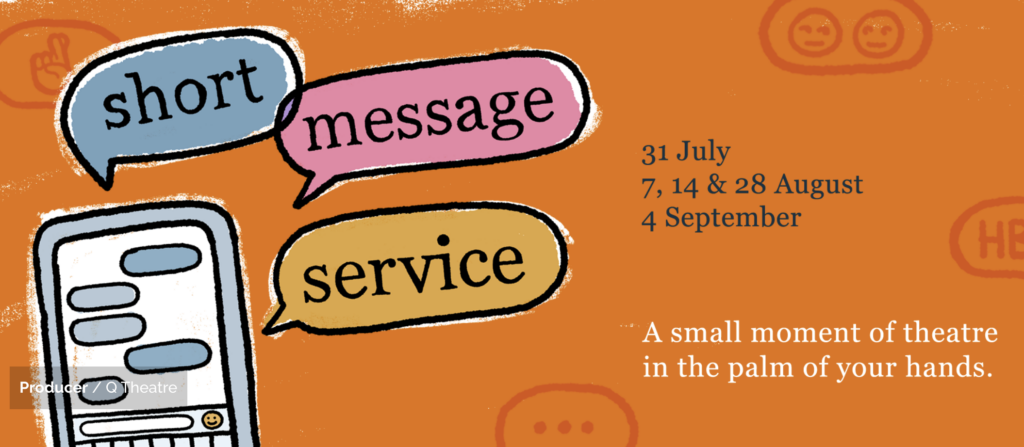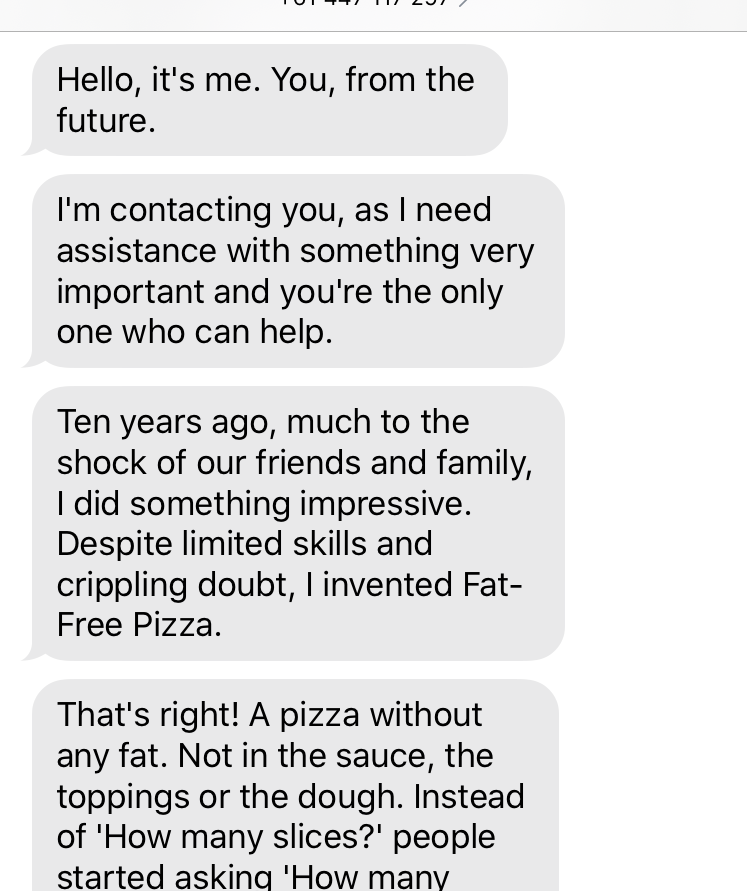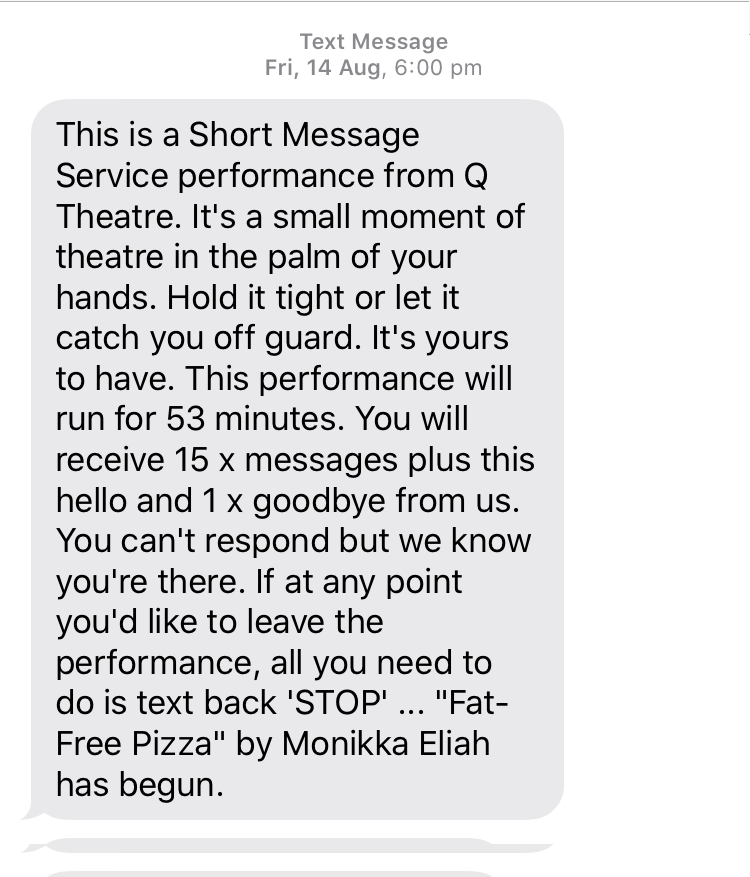Share article:
Play text: Combining high art with everyday tech

COVID’s impacts have been devastating, and significantly within the arts sector. Almost immediately, every form of non-digital, spectator performances were shut down including local community arts organisation Q Theatre in Penrith, Australia.
Since 2005, the Q Theatre has operated as part of the Joan Sutherland Performing Arts Centre presenting the best in theatre, music and performance with acts both international and local. Q Theatre, has focused on supporting up-and-comers, people with a disability and trialling innovative experiments in theatre. Their innovative artists and writers were already experimenting with texting, voice mails, robo-calls and many other forms of technology as part of their performances.

We were experimenting with different kinds of techniques or tools that are usually used for marketing purposes.
Nick Atkins
In part, this may be why Q Theatre, could withstand the shutdown. According to New Work Director, Nick Atkins, their team of highly trained and talented writers simply put their heads down to figure out one simple thing – how to now get those performances to their audiences.

‘SMS’ came about as a pilot project with a ‘Spartan’ approach. Settling strictly on using SMS alone meant audiences wouldn’t be distracted. For Atkins, he wanted recipients to really engage ‘with the form for what it is.’ For his writers, he knew that a restrictive or tight brief would play to their creative capabilities.
Do you have an innovative idea for text?
Get a free account and play with 25 free SMS straight away.

Why ‘SMS’ chose text messaging
‘SMS’ is hugely indebted to Atkins for his love of hybridising technology with theatre art. For him, it’s not about one form over the other. Theatre can feel high-brow at the best of times and draw niche audiences, seriously restricting its ability to reach the masses while digital can be easy to ‘sign off’ or distance ourselves from what is occurring right in front of our eyes. Combining the forms (and their advantages), such as receiving a text which forces you to go out into live locations to see something, can be where it is most powerful.

Atkins has a huge interest in virtual reality and other tech and what artists are doing with it. He has maintained a sincere affection however for low-fidelity, or lo-fi, tech because it’s accessible to everyone.
[With lo-fi tech], if you enjoy a story or you hate a story, it doesn’t matter. You can just make your own one.
Nick Atkins
That was in part, how they landed on text messaging as the driver and main medium for ‘SMS’. Access and accessibility to a mobile phone or even texting is universal. Almost 5 billion people in the world now own or use a mobile phone. Texting, as well, doesn’t require the latest smartphone. Almost every mobile is capable of receiving and sending text messages. With a diverse makeup of their audiences, the technology needed to be easy, familiar and without barriers. “We didn’t want [audiences] to have to download an extra application or anything along those lines,” said Atkins, which can often act as a further hindrance to consumption or participation.
I think the reason we went with text to begin with is for its directness with people.
Nick Atkins
Texting, in addition, synced up with certain attributes of theatre difficult to convey with other technological mediums. In Atkin’s mind, text isn’t decided by an algorithm. Instead, it simply conveys small ‘bits’ (160 characters) of information which writers and playwrights must work hard to layer with subtext and meaning. Another reason SMS works in this format comes down to our direct relationship with the simple text message. Streamed theatre has grown in popularity since the advent of COVID but you’re still very aware of the screen (and distance) between you, the performers and the performance.
We love people doing [streamed theatre]. Good on them. But that adaptation feels a little like recreation.
Nick Atkins
With your phone, or even with a simple message, there’s more of an ‘embodied relationship’ there. We’ve all received life-changing news or been desperate to check a text to find out the next part of a friend’s story. The information, therefore, imparted by it is more significant to us and ‘SMS’ plays on that.
Try bulk SMS for free.
There’s limitless ways to use it. See for yourself.

How ‘SMS’ plays out
New performances are scheduled every Friday between 6 – 7 PM and are running for 6 weeks – similar to normal theatre showings. According to Atkins, they wanted to give their regulars a “sense of their old routine.”

After registering for a free ticket, patrons simply have to wait for the allotted time to begin. An introductory text message opens the performance clarifying how it will run. Within the hour, the recipient will receive between 10 – 16 SMS and will end with a concluding text. Setting the tone, and frequency early on with their introductory message was really important.
We wanted to give audiences a really good sense that they know what they’re in for.
Nick Atkins
Managing frequency and timing of the texts was also vital but down to the discretion of their writers ultimately. Their aim was to provide a natural number of texts per the story scenario without spamming audiences’ phones. The timing between the texts was also deliberate with many of the writers forced to “write in the pauses” as well as the texts themselves.
The story, after all, should dictate the timing and make full use of the form. The performance’s first showing is about someone on their first date messaging their friend at home while the second is about a worker waiting for their shift to begin but finding themselves locked outside. If the story told through text doesn’t have a sense of time or an escalation of events, it doesn’t quite work and becomes a “story that’s just spaced out.”
We don’t encourage people to stop what they’re doing. We encourage them to be caught off guard by this.
Nick Atkins
‘SMS’ isn’t meant to be experienced a certain way such as in a darkened room or with friends. It’s not even supposed to get your full attention. It’s described in their marketing collateral as “a small snack that you pack when you’re on the train” or a “sneaky glass of wine before a party starts.” Like theatre, which attracts the same kind of intimacy, it’s supposed to emulate a small private experience – except this one’s just for you. Atkins encourages audiences to go about their day and let the story surprise you when you hear that all-important text alert sound.
What’s the future of ‘SMS’
So far, text messaging is an unexplored forum for much of the theatre world. For Atkins, there isn’t a whole lot of it at the moment which means there’s a real opportunity in Australia for this kind of work. What ‘SMS’ has delivered is a much larger audience for Q Theatre thanks to the accessibility of SMS, both in economic and technological terms. There’s also the fact that many people are stuck in their homes looking for new forms of distraction. In fact, as of its third week, the numbers have stayed strong and consistent.
‘SMS’ has attracted a much larger community outside of their normal locals and regulars. Patrons from Melbourne, Sydney and other communities have flocked to these performances, intrigued by what ‘SMS’ will bring as the future of arts and theatre in a far more restricted and remote world. While Atkins isn’t sure what a far-reaching patronage could mean for now, it can only lead to better and bigger things. He is adamant however that Q Theatre not lose what it means to be a local arts organisation.
For Atkins, the future lies in more interactive models such as chat bots that can simulate a playwright’s tone of voice or keep audiences guessing as to who is the true human or AI. But for now, theatre in all of its forms is helping to add ‘healthy disruptions’ to the same sameness many of us are experiencing every day. The increasing popularity and interest in this project shows a growing fatigue of our regular, on-demand, 24/7 streaming platforms.
If this is just the day where you got a few texts that made you feel a bit special, and it made it feel very different to the day before and the day after, that’s the real win.
Nick Atkins
Whereas ‘SMS’ has a novelty around it. It’s intriguing and demands your time (if not your full attention) in a way that nothing has for many of us over the past year. The original pitch, Atkins said, for this project was simple: to make this day feel a little bit different to the one before.
Given its success, and returning patrons, it looks like they met the brief.
See what SMS can do for you.
Our communication specialists can give you all the guidance you need.

Final thoughts, further reading
To check out other innovative uses of text during COVID:
- How text helped this COVID non-profit gets PPE to essential workers
- Using SMS as an affordable alternative for contact tracing
- Find out how this remote neighbourhood network kept residents connected during COVID using text messaging
- 4 surprising ways educators can use SMS to enhance learning
